Full Exposure, my spicy Mardi Gras romance, is currently $1.99 on ebook at most major retailers! Grab a copy and tell a friend.
I’m a naughty writer.
There. I said it.
I barely read any books during the year and a half it took me to write the first draft for Something Cheeky. I know it’s important for a writer to read widely and to read a lot of books in their chosen genre.
I was so stuck in my head about my third novel that reading any type of fiction would feed my imposter syndrome. Even though I constantly reminded myself that a published book only shows the finished work after multiple drafts, I still compared what I was trying to write to those books. I couldn’t turn off my writer brain.
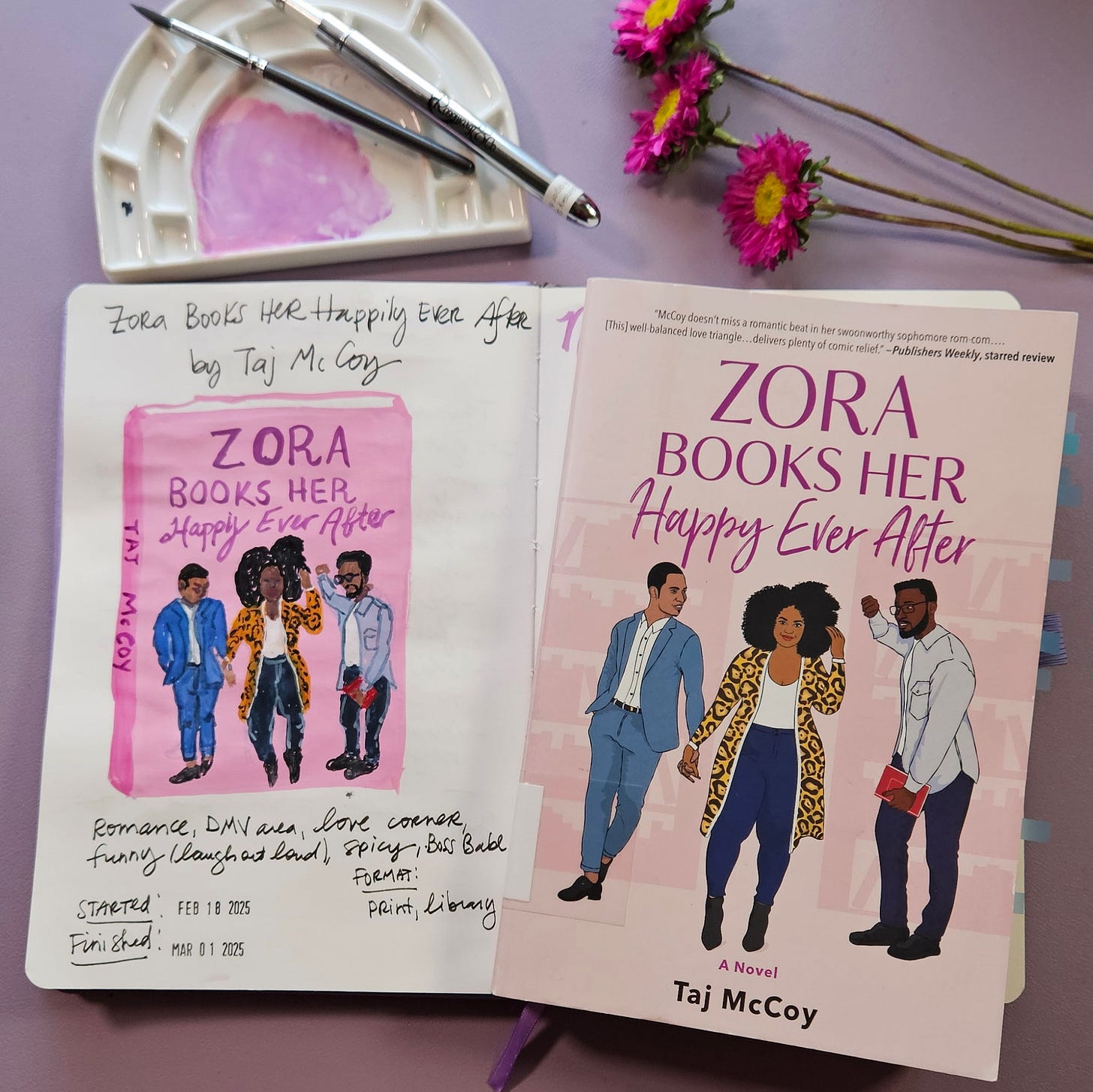
Every fiction novel I tried to read made my self-doubt worse. I hated that I couldn’t finish reading a book. Instead I watched a lot of character driven tv shows and movies to feed my need for stories. I’ve lost count of how many times I rewatched Crazy Rich Asians and The Lost City.
This funk lifted once I finally turned in my first draft to my editor. It wasn’t even a completed first draft, but that’s a story for another day. Once the manuscript was out of my hands (temporarily), I tiptoed back into reading for pleasure.
Like stretching for a workout, I found my way back. I trained my attention span to focus on longform writing instead doomscrolling on my phone or watching easy-to-solve tv crime dramas.
How?
I started a new reading journal—one that didn’t focus on numbers.
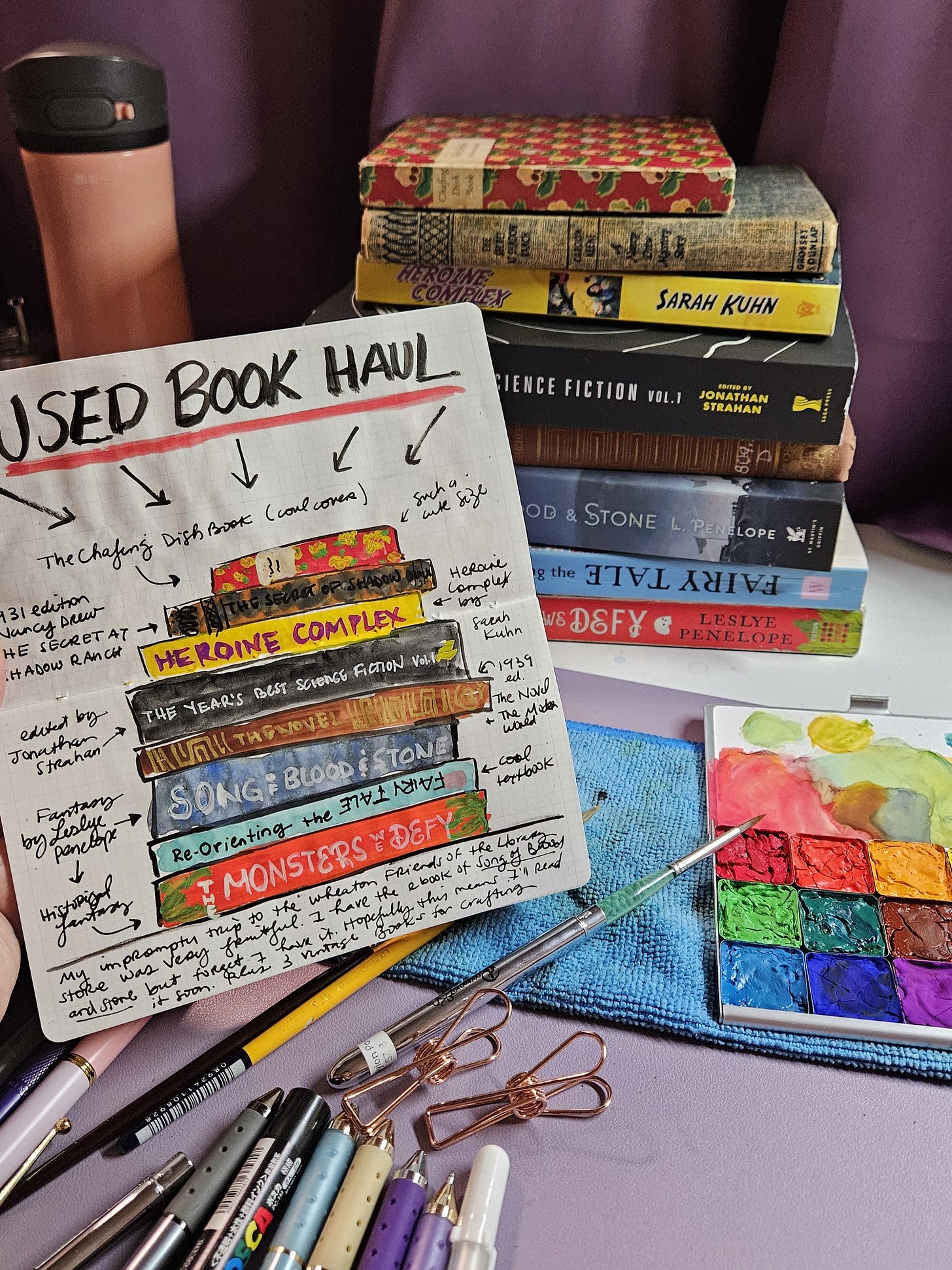
Creating a visual reading journal
When my partner hurt his knee in January of 2024 and was bedridden for two months, our family life got turned upside down. After taking care of my partner and our kids, I found solace in my illustrated journal in the quiet evening. Usually I only had energy for fifteen to twenty minutes.
Sometimes called a visual journal, the notebook is a mix of drawn/painted images and journaling. The process of brushing paint onto paper soothed me. I painted and journaled about things that brought me joy such as food I’d eaten or fresh flowers I’d purchased for myself.
So why not try it with books I’ve read?
Like any stationery lover does, I bought a new, inexpensive notebook that contain fountain pen friendly paper. And in this case, works well with watercolors. I chose an A5 notebook because it’s large enough for me to paint the cover but not too big where I feel pressured to fill up the page. (It’s this one* <—affiliate link.)
Once I finish reading a book, I draw or paint the cover before recording details I want to remember. I try not to stress about how “good” my art looks. Drawing people are a work-in-progress for me, which is challenging when I read romance novels. I love it when romances have the characters on the cover, but I don’t do them justice in my journal.
I focus on enjoying the process of mixing paints and brushing them on the paper. The tactile feel of fountain pen nib on paper as I write down favorite quotes and my personal (and private) review of the book.
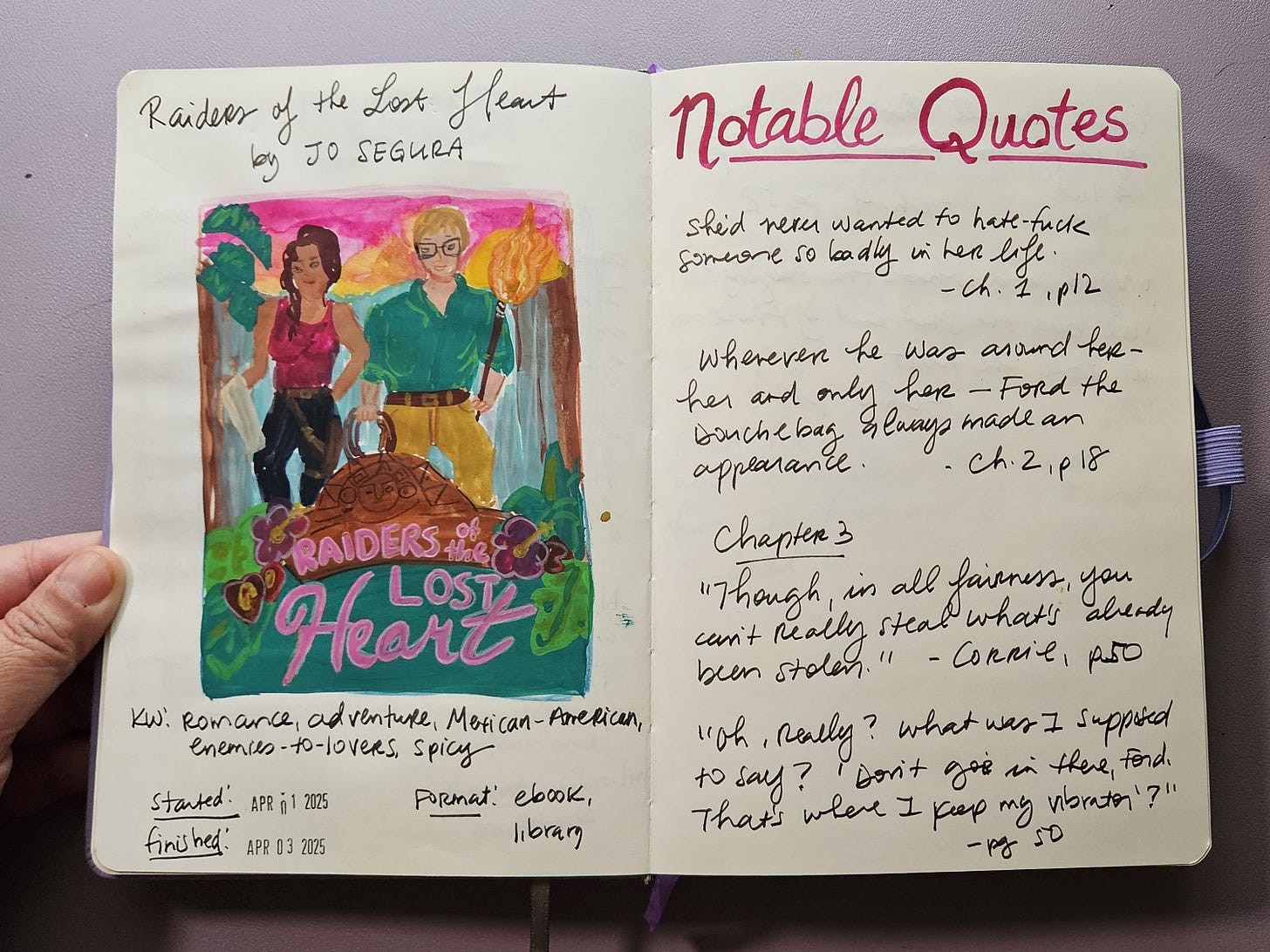
Why I track my reading
In the past I used Goodreads then Storygraph to track my reading but I wasn’t very consistent. After watching a bunch of YouTube videos, I created a reading journal in 2023 to track all the things: books and pages read, monthly goals, etc.
Four months into the year, I lost that cute journal that I’d spent so much time setting up. I wasn’t reading enough then so I stopped tracking my books read.
I still want—need—to track what I read because I have horrible memory when it comes books, plot, character names unless there’s something about the novel that I can’t stop thinking about. When I’m doing author panels or interviews, I’m inevitably asked to recommend books. Thus, I need to remember some of them.
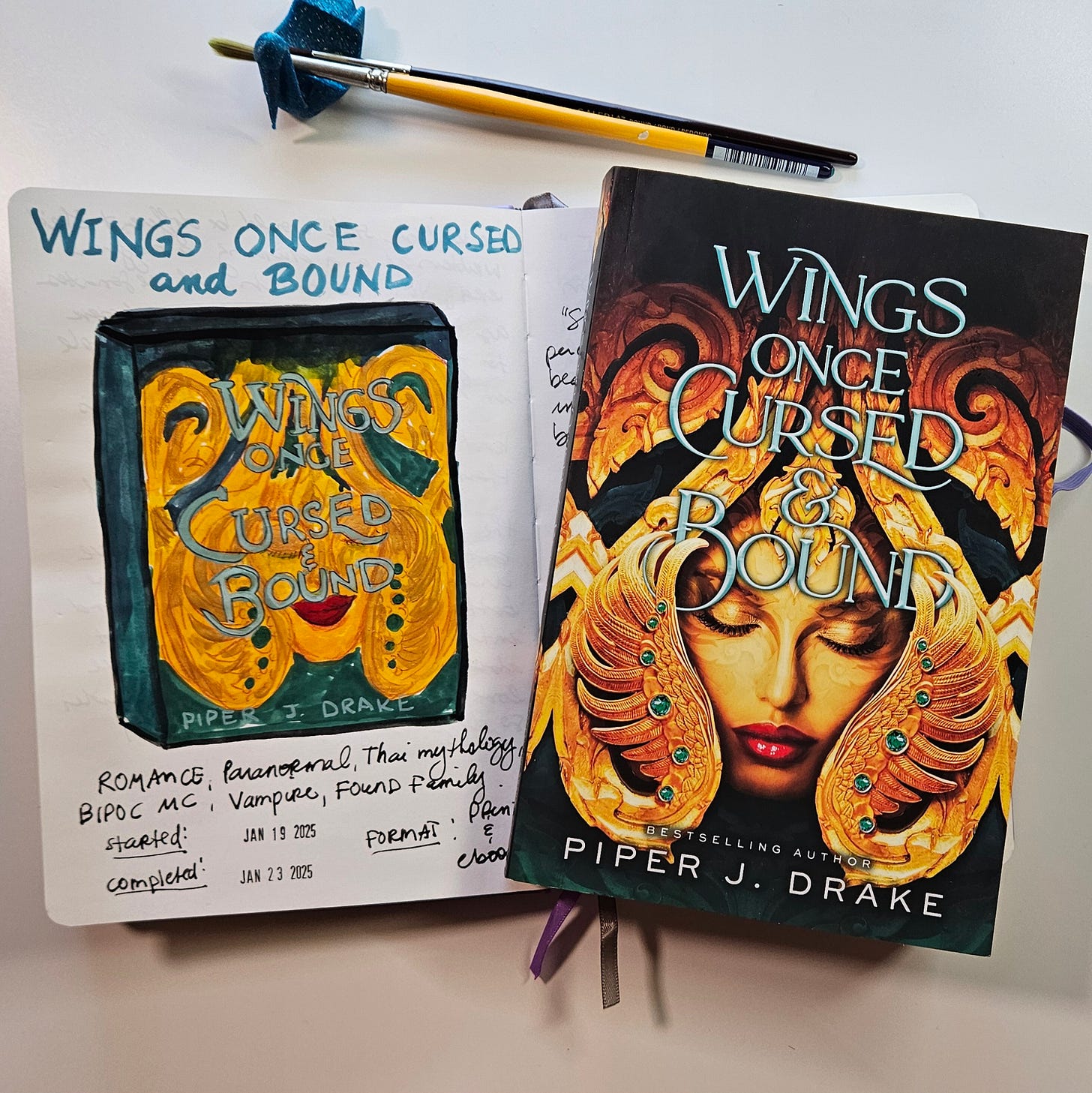
I’m not concerned with how many words read or page count. I mostly keep the journal to remember the books and what I liked about it. My main reading goal is prioritizing books written by people who aren’t cis-het white men. So recording what I’ve allows me to see at a glance how I’m doing on that goal.
You know that sad feeling when you’ve read the end of the book but you’re not ready to let the characters go? I’ll brew a cup of tea and sit down to savor the process of recording my thoughts about the book. It allows me to revisit the story and the characters just a little bit longer which helps me remember the book a little bit better.
I started this visual reading journal in January and have more or less stuck with it. I don’t even mind that I’ve only read seven books so far this year because I’ve rediscovered my love for reading.
If you want to keep up with my visual journaling, follow me on Instagram.
How do you track your reading? Or if you don’t, why not?
P.S. Apologies to
, , and Piper J. Drake for not doing justice to their beautiful covers.



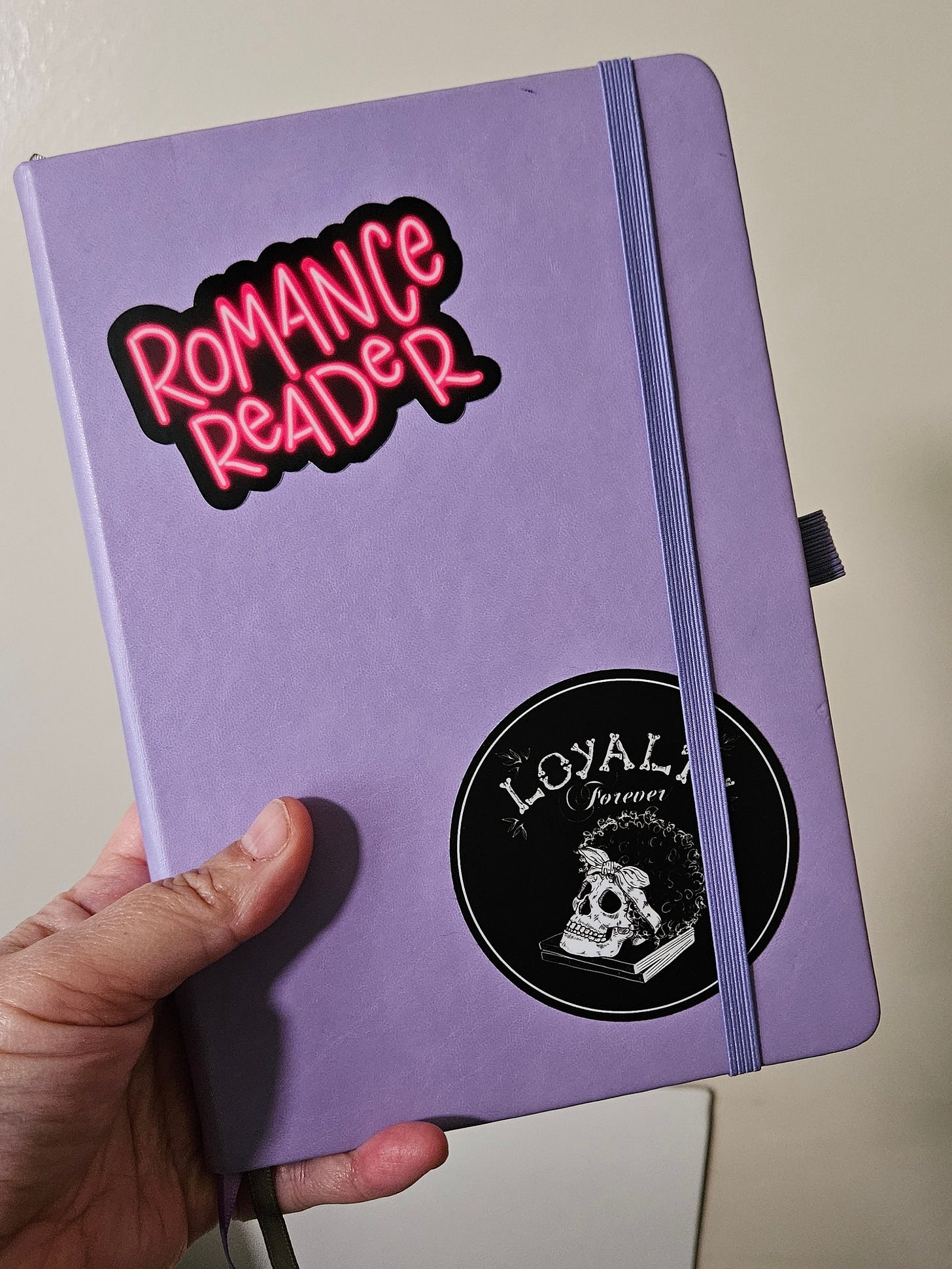
I’m really happy that I read this about making reading fun again. I could so relate to everything…and I mean everything you wrote about. I’ve been a journaler most of my life, still am, I am also an artist and because I remember things easier visually, doing what you’ve done makes good sense to me!!!
Thank you!!!
I started my Substack for the sole purpose of writing reviews so I could remember the books I’ve written. I kind of fell out of that though because I made it too formulaic and it wasn’t fun after a while.
But I like the idea of a visual reading journal, maybe I’ll give that a try — with collages to represent the books since I don’t think painting is my thing.